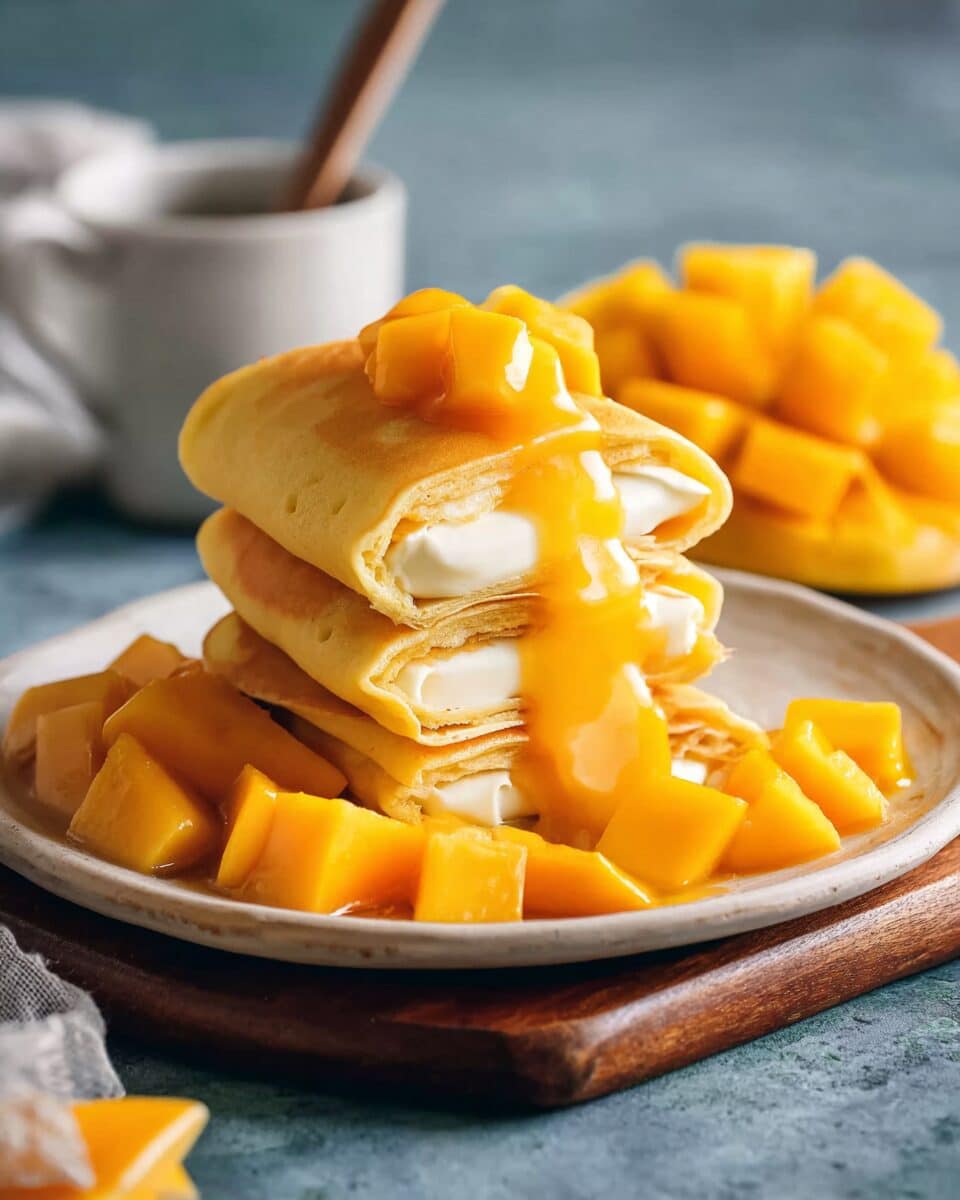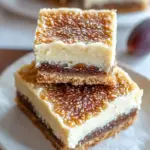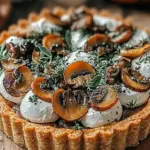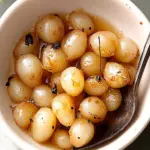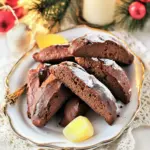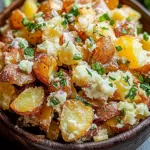Why This Recipe Stands Out
Mango pancakes aren’t your everyday dessert—they’re something special. Their appeal lies in their refined simplicity: silky mango slices wrapped in fresh whipped cream and a soft pancake. Unlike heavier desserts, these are light and cooling, making them ideal for warmer weather or when you want a sweet finish that isn’t too filling. The contrast between the chewy pancake and the airy cream makes every bite interesting, while the mango adds both sweetness and acidity to balance the richness. Visually, they’re stunning too—bright, smooth parcels that look delicate and elegant on a dessert plate. And though they appear complex, they’re surprisingly achievable in a home kitchen with just a little finesse.
What really sets these apart is the texture. The crepe is cooked only on one side, giving it a velvety exterior and a slight stretch that wraps beautifully around the filling. This technique gives the pancakes a professional, patisserie-like feel. They’re also very adaptable—you can swap in other fruits like strawberries or peaches, or flavor the cream with citrus zest or a hint of liqueur. But mango remains the favorite, thanks to its tropical flavor and soft flesh.
The Benefits of the Ingredients
This recipe uses straightforward, wholesome ingredients, with mango being the undeniable star. Ripe mangoes are packed with vitamin C, beta-carotene, and fiber. Their naturally soft texture makes them ideal for a dessert that relies on smoothness and freshness. Mangoes also provide natural sweetness, allowing you to use less sugar overall.
Heavy cream, when whipped, becomes light and fluffy, giving the dessert its signature softness. Though indulgent, it balances well with the fruit. You can substitute with dairy-free alternatives like coconut cream to make the recipe vegan or lactose-free.
The pancake batter is made from flour, cornstarch, eggs, and milk. Cornstarch gives the crepe its soft, almost elastic texture, while eggs and flour create structure. Milk keeps the batter smooth and pourable, while melted butter adds richness and helps prevent sticking during cooking. A small amount of sugar and optional food coloring enhance the flavor and appearance, though both can be adjusted to taste.
Powdered sugar is used to sweeten the whipped cream subtly. It dissolves easily and helps stabilize the cream without overpowering the natural sweetness of the mango.
Cooking Tips for Perfection
Patience and a gentle hand are the secrets to perfect mango pancakes. Letting the batter rest after mixing allows the flour to fully hydrate, resulting in smoother, more elastic crepes. Cooking on one side only is key to getting that soft, silky finish that makes these pancakes so distinctive.
Use a non-stick pan and a light touch of oil or butter to ensure the pancakes lift easily without tearing. Pour a small amount of batter and swirl quickly to coat the pan in a thin layer. Cook just until the surface looks dry and set—don’t flip. Cool each pancake on a plate before stacking to avoid sticking.
For the cream, make sure everything is cold—chilled bowl, chilled beaters, and chilled cream. This helps it whip faster and hold its shape longer. Don’t overbeat or the cream can turn grainy; stop at soft peaks.
As for assembling, make sure the pancakes are completely cool. Use a generous but not overflowing amount of cream and fruit, and fold neatly, tucking in the sides for a smooth, compact finish. Refrigerate the filled pancakes for at least 30 minutes before serving. This helps them firm up and hold their shape.
Serving Suggestions for a Complete Meal
While these pancakes are typically served as a dessert, they also shine at brunch or as part of a special breakfast spread. Pair them with a pot of jasmine tea or a glass of chilled coconut water for a refreshing contrast. They work beautifully as a make-ahead dish for parties—just keep them chilled until ready to serve.
To elevate them further, drizzle with mango coulis or dust with powdered sugar just before serving. For added texture, a sprinkle of toasted coconut or crushed pistachios can be added on top. If serving a crowd, you can offer a platter with variations—some filled with other tropical fruits or flavored creams.
They’re also great for gifting. Wrapped in parchment paper or placed in a cupcake liner, they make elegant treats for birthdays, baby showers, or holiday tables. Because they need refrigeration, they’re best for small gatherings or short-term storage, but their visual appeal and taste more than make up for that.
Conclusion
Mango pancakes are a celebration of soft textures and fresh flavors, bringing together delicate crepes, airy whipped cream, and juicy mango in one elegant bite. They’re light, refreshing, and full of tropical character, offering a delicious contrast to traditional baked desserts. This recipe lets you recreate the experience of a high-end dessert café in your own home, with ingredients that are easy to find and steps that, with a little practice, become second nature.
What makes these pancakes truly special is how they manage to be both simple and luxurious. Every element—from the single-side crepe to the fruit-filled core—is thoughtfully crafted to balance flavor and texture. They’re the kind of dessert that feels indulgent yet light, refined but accessible.
Whether you’re preparing them for a quiet afternoon treat or a festive gathering, mango pancakes never fail to impress. They’re a beautiful reminder that dessert doesn’t need to be overly sweet or complicated to be memorable—sometimes, it’s the softest, freshest flavors that leave the biggest impact.

